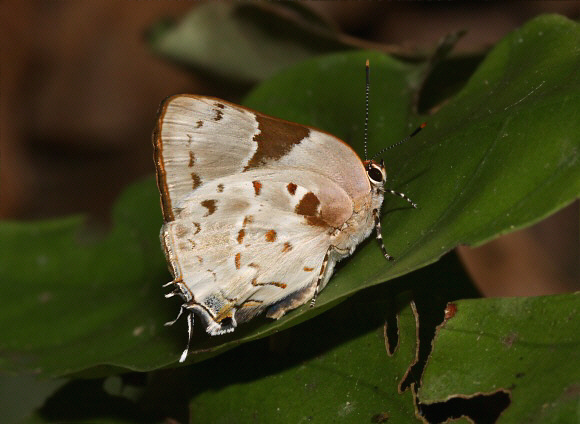
Introduction
Almost all neotropical Theclinae species are placed in the Eumaeini. The tribe is not particularly well represented in collections, so until fairly recently a high percentage remained unstudied, and were inappropriately filed away in the ‘convenience’ genus Thecla. Many taxonomists have attempted to rationalise the systematics of the Eumaeini, the most recent being Robbins who published a revision in 2004, reclassifying the taxa into 83 genera. Currently there are 1058 known species. Taking into account their small size, secretive behaviour, and the great similarities between many species, it is estimated that about another 200 species probably remain to be discovered.
The genus Tmolus comprises of 15 known species, including 9 recently discovered by Robbins while examining museum specimens, which have not currently been assigned scientific names.
The males of all species are dark brown on the upperside, with a brilliant metallic blue sheen over the hindwings and over the basal area of the forewings. Females are a paler shade of brown, and typically have only the slightest trace of blue on the upperside. The undersides vary considerably according to species – some such as mutina are quite plain, marked only with a thin white median hair streak and a pale orange tornal spot. In others including echion and crolinus the hair streak on the hindwing is broken into a staggered series of orange dashes, and there are additional squarish orange spots in the basal area. Tmolus cydrara is unusual in its markings, and cannot be confused with any other member of the Theclinae.
The commonest and most widespread Tmolus species is echion, which can be found throughout the neotropics from Mexico to Paraguay and Argentina.
Tmolus cydrara is distributed from southern Mexico to Peru.
Habitats
This species is found in rainforest and cloudforest habitats at altitudes between about 200-1000m.
Lifecycle
Unknown.
Adult behaviour
The butterflies are usually encountered when imbibing mineralised moisture from boulders or logs, or when settled on low foliage.
